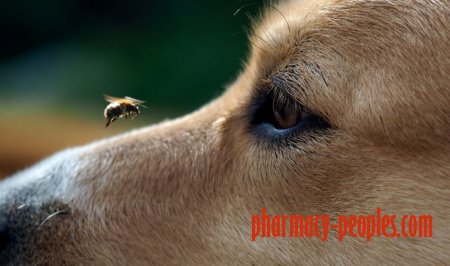Insect Bites
Dogs and cats are curious creatures and will often stick their nose where it doesn’t belong. If you’ve got a pet who likes to dig, explore dark spaces or get in amongst the bush, chances are at some point they’ll meet an insect who takes a dislike to them and will react with a sting or bite. How will you know and what do you need to do?
Symptoms
Symptoms can vary depending on what your pet has been bitten or stung by. With some insects like flies, bees, hornets and wasps, the effect tends to be localised to the point of entry to the skin. In other words, if your pet gets stung on the face…you’ll see the effects on the face only. A sting from one of these stripy stingers can cause considerable pain for your pet and you may notice swelling, redness, rashes as well as vomiting, diarrhoea and stumbling.
On the other hand, if your pet gets too close to some ants, it’s unlikely that your pet will have just one bite. You’re likely to see a series of red marks in one area of your pet. If they have been standing, this is likely to be on their feet or legs but if they’ve been lying near ants it could be anywhere across the body. The bites will be itchy, red, raised and may cause stumbling and lameness.
Of course we may not know what has stung/bitten our furry friend so general symptoms to look out for are:
- Itching
- Restlessness
- Redness in one area
- Swelling (not always, but with some insects)
- “Lumpy” skin
- Vomiting
- Difficulty breathing
Treatment
If you suspect your pet has been bitten or stung, keep them calm and as still as possible. This will slow down their heart rate and in turn slow down the venom travelling around their body. Symptoms will start to appear around 20 minutes after the sting. Some types of bee will leave their stinger behind and this can carry on pumping venom into your pet. If you can, remove the stinger. Do not use tweezers as this will squeeze out more venom. Instead, use a bank card or similar to gently scrape the stinger out, parallel to the skin.
You can apply an ice pack to the affected area to reduce inflammation and pain. Some owners find applying a paste of water and baking soda to the area can help to relieve itching. Just keep an eye on your pet to make sure they don’t eat the mixture!
It is always best to consult your vet. Give them a call and they’ll be able to tell you whether to just observe your pet at home or if they need to be brought in immediately. That being said, some pets can have an allergy to stings and so any extreme reactions e.g extreme swelling, difficulty breathing, vomiting, diarrhoea or stumbling around means that you should head to the vet immediately.

